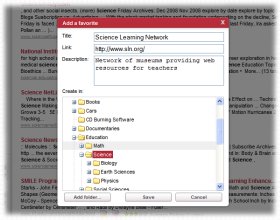|
Education
Web
Viewing 1-3 of 3 total results
Glossary 43 Coordinates: A pair of numbers used to describe the location of a point on a coordinate plane. Counterexample: An example that proves a statement false. Cube: A three-dimensional figure that has six square faces. Customary Systems: A measuring system used mainly in the...
1
0
Glossary 43 Coordinates: A pair of numbers used to describe the location of a point on a coordinate plane. Counterexample: An example that proves a statement false. Cube: A three-dimensional figure that has six square faces. Customary Systems: A measuring system used mainly in the United States using units such as inches and feet. Data: Information, facts, or numbers used to describe something. Data Analysis: A process of collecting and organizing data in order to identify
50
0
http://www.doe.nv.gov/Standards/Mathematics/New_Nevada_Math_Standards_Complete_Document_6.29.06_PDF.pdf#page=50
www.doe.nv.gov/Standards/Mathematics/New_Nevada_Math_Standards_Complete_D...
Glossary 43 Coordinates: A pair <span class="highlight">of</span> numbers used to describe the location <span class="highlight">of</span> a point on a coordinate plane. Counterexample: An example that proves a statement false. Cube: A three-dimensional figure that has six square faces. Customary Systems: A measuring system used mainly in the United States using units such as inches and feet. Data: <span class="highlight">Information</span>, facts, or numbers used to describe something. Data <span class="highlight">Analysis</span>: A process <span class="highlight">of</span> collecting and organizing data in order to identify
experiment Explicit A formula whose dependent variable is defined in terms of the independent variable Ex. y = 2x – 3 Exponential form A quantity expressed as a number raised to a power (In exponential form, 32 can be written as 2 5 .) Face A two-dimensional side of...
1
0
experiment Explicit A formula whose dependent variable is defined in terms of the independent variable Ex. y = 2x – 3 Exponential form A quantity expressed as a number raised to a power (In exponential form, 32 can be written as 2 5 .) Face A two-dimensional side of a three-dimensional figure Ex. The faces of a cube are squares. Factor One of two or more numbers that are multiplied together to get a product (13 and 4 are both factors of 52 because 13 • 4 = 52.) Flip (Reflection) (See
70
0
http://arkansased.org/teachers/pdf/k8_math_may05.pdf#page=70
arkansased.org/teachers/pdf/k8_math_may05.pdf#page=70
experiment Explicit A formula whose dependent variable is defined in terms <span class="highlight">of</span> the <span class="highlight">independent</span> variable Ex. y = 2x – 3 Exponential form A quantity expressed as a number raised to a power (In exponential form, 32 can be written as 2 5 .) <span class="highlight">Face</span> A two-dimensional side <span class="highlight">of</span> a three-dimensional figure Ex. The faces <span class="highlight">of</span> a cube are squares. Factor One <span class="highlight">of</span> two or more numbers that are multiplied together to get a product (13 and 4 are both factors <span class="highlight">of</span> 52 because 13 • 4 = 52.) Flip (Reflection) (See
dimensional shapes. • Vertex, edge, face, side • 3D figures – cube, rectangular prism, sphere, cone, cylinder, and pyramid • 2D figures – square, rectangle, circle, triangle • Relationships between three- and two-dimensional shapes (i.e., the face...
1
0
dimensional shapes. • Vertex, edge, face, side • 3D figures – cube, rectangular prism, sphere, cone, cylinder, and pyramid • 2D figures – square, rectangle, circle, triangle • Relationships between three- and two-dimensional shapes (i.e., the face of a 3D shape is a 2D shape) 3. Describe, identify and create instances of line symmetry. 4. Recognize, describe, extend and create designs and patterns with geometric objects of different shapes and colors. 4.2.2 B. Transforming Shapes 1. Use simple shapes to
18
0
http://www.nj.gov/education/cccs/2004/s4_math.pdf#page=18
www.nj.gov/education/cccs/2004/s4_math.pdf#page=18
dimensional shapes. • Vertex, <span class="highlight">edge</span>, <span class="highlight">face</span>, side • 3D figures – cube, rectangular prism, sphere, cone, cylinder, and pyramid • 2D figures – square, rectangle, circle, triangle • Relationships between three- and two-dimensional shapes (i.e., the <span class="highlight">face</span> <span class="highlight">of</span> a 3D shape is a 2D shape) 3. Describe, identify and create instances <span class="highlight">of</span> line symmetry. 4. Recognize, describe, extend and create designs and patterns with geometric objects <span class="highlight">of</span> different shapes and colors. 4.2.2 B. Transforming Shapes 1. Use simple shapes to
|
